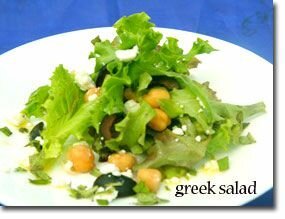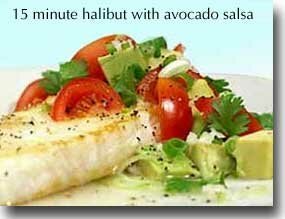If you don't know what to serve for dinner tonight ...
This salad is a good healthy start for any meal. It is a quick-and-easy way to add flavor and nutrition to your meal all year round. Enjoy!

Ingredients:
- 1 large head romaine lettuce, outside leaves discarded
- 1 large tomato, chopped
- 1 small red bell pepper, julienned into 1 inch long pieces
- 1/2 small avocado, cut into chunks
- 2 TBS coarsely chopped walnuts (optional)
- Dressing
- 2 TBS lemon juice
- 2 tsp balsamic vinegar
- Extra virgin olive oil to taste
- Salt and cracked black pepper to taste
- Remove outer leaves of lettuce heads and discard. Cut off tops of leaves and discard as they are bitter.
- Chop remaining inner leaves. Rinse in cold water, and if you have a salad spinner, spin lettuce to dry. If you don't have one, remove as much water as possible in a colander and then dry with paper towels. This will keep the flavor of the salad from getting diluted.
- Whisk together lemon juice, vinegar, olive oil, salt and pepper in a small bowl and toss with salad greens. Sprinkle with chopped walnuts if desired.
In-Depth Nutritional Profile for Romaine & Avocado Salad
Healthy Food Tip
The Latest News about Avocados
The avocado is colloquially known as the Alligator Pear, reflecting its shape and the leather-like appearance of its skin. Avocado is derived from the Aztec word "ahuacatl". Avocados are the fruit from Persea americana, a tall evergreen tree that can grow up to 65 feet in height. Avocados vary in weight from 8 ounces to 3 pounds depending upon the variety. There are dozens of varieties of avocadoes. The rich and creamy Haas variety is the most popular type of avocado in the United States, and 95% of all avocados grown in the United States are produced in California, original home of the Haas variety. They are generally available throughout the year, they are the most abundant and at their best during the spring and summer in California and in October in Florida. During the fall and winter months you can find Fuerto, Zutano and Bacon varieties. While avocados are technically fruits, we have categorized them here as vegetables since this is how they are usually considered f rom a culinary perspective.
What's New and Beneficial About Avocados
- Consider adding avocado to salads, and not only on account of taste! Recent research has shown that absorption of two key carotenoid antioxidants - lycopene and beta-carotene - increases significantly when fresh avocado (or avocado oil) is added to an otherwise avocado-free salad. One cup of fresh avocado (150 grams) added to a salad of romaine lettuce, spinach, and carrots increased absorption of carotenoids from this salad between 200-400%. This research result makes perfect sense to us because carotenoids are fat-soluble and would be provided with the fat they need for absorption from the addition of avocado. Avocado oil added to a salad accomplished this same result. Interestingly, both avocado oil and fresh avocado added to salsa increased carotenoid absorption from the salsa as well. That's even more reason for you to try our 15-Minute Halibut with Avocado Salsa, a great-tasting recipe that can help optimize your carotenoid health benefits.
- The method you use to peel an avocado can make a difference to your health. Research has shown that the greatest concentration of carotenoids in avocado occurs in the dark green flesh that lies just beneath the skin. You don't want to slice into that dark green portion any more than necessary when you are peeling an avocado. For this reason, the best method is what the California Avocado Commission has called the "nick and peel" method. In this method, you actually end up peeling the avocado with your hands in the same way that you would peel a banana. The first step in the nick-and-peel method is to cut into the avocado lengthwise, producing two long avocado halves that are still connected in the middle by the seed. Next you take hold of both halves and twist them in opposite directions until they naturally separate. At this point, remove the seed and cut each of the halves lengthwise to produce long quartered sections of the avocado. You can use your thumb and index finger to grip the edge of t he skin on each quarter and peel it off, just as you would do with a banana skin. The final result is a peeled avocado that contains most of that dark green outermost flesh so rich in carotenoid antioxidants!
- We tend to think about carotenoids as most concentrated in bright orange or red vegetables like carrots or tomatoes. While these vegetables are fantastic sources of carotenoids, avocado-despite its dark green skin and largely greenish inner pulp-is now known to contain a spectacular array of carotenoids. Researchers believe that avocado's amazing carotenoid diversity is a key factor in the anti-inflammatory properties of this vegetable. The list of carotenoids found in avocado include well-known carotenoids like beta-carotene, alpha-carotene and lutein, but also many lesser known carotenoids including neochrome, neoxanthin, chrysanthemaxanthin, beta-cryptoxanthin, zeaxanthin, and violaxanthin.
- Avocado has sometimes received a "bad rap" as a vegetable too high in fat. While it is true that avocado is a high-fat food (about 85% of its calories come from fat), the fat contained in avocado is unusual and provides research-based health benefits. The unusual nature of avocado fat is threefold. First are the phytosterols that account for a major portion of avocado fats. These phytosterols include beta-sitosterol, campesterol, and stigmasterol and they are key supporters of our inflammatory system that help keep inflammation under control. The anti-inflammatory benefits of these avocado fats are particularly well-documented with problems involving arthritis. Second are avocado's polyhydroxylated fatty alcohols (PFAs). PFAs are widely present in ocean plants but fairly unique among land plants-making the avocado tree (and its fruit) unusual in this regard. Like the avocado's phytosterols, its PFAs also provide us with anti-inflammatory benefits. Third is the unusually h igh amount of a fatty acid called oleic acid in avocado. Over half of the total fat in avocado is provided in the form of oleic acid - a situation very similar to the fat composition of olives and olive oil. Oleic acid helps our digestive tract form transport molecules for fat that can increase our absorption of fat-soluble nutrients like carotenoids. As a monounsaturated fatty acid, it has also been shown to help lower our risk of heart disease. So don't be fooled by avocado's bad rap as a high-fat food. Like other high-fat plant foods (for example, walnuts and flaxseeds), avocado can provide us with unique health benefits precisely because of its unusual fat composition.
WHFoods Recommendations
When you prepare an avocado, we highly recommend that you use the
"nick and peel" method described above. This will allow you to enjoy the
greatest concentration of its health-promoting carotenoids.
Health Benefits
Avocados provide numerous health benefits including:
- Anti-inflammatory benefits
- Enhanced absorption of carotenoid antioxidants
- Heart health support
- Blood sugar regulation
- Anti-cancer support
Nutritional Profile
Avocados contain an amazing array of phytonutrients. Included are
phytosterols (especially beta-sitosterol, stigmasterol, and
campesterol); carotenoids (beta-carotene, alpha-carotene, lutein,
neochrome, neoxanthin, chrysanthemaxanthin, beta-cryptoxanthin,
zeaxanthin, and violaxanthin); flavonoids (epicatechin and
epigallocatechin 3-0-gallate); and polyhydroxylated fatty alcohols.
Alpha-linolenic acid (an omega-3 fatty acid) and oleic acid are key fats
provided by avocado. Avocados are a good source of bone supportive
vitamin K and copper as well as heart-healthydietary fiber, vitamin B6,
vitamin C, folate and copper. Avocados are also a good source of
potassium: they are higher in potassium than a medium banana.
Although they are fruits, avocados have a high fat content of between 71 to 88% of their total calories - about 20 times the average for other fruits. A typical avocado contains 30 grams of fat, but 20 of these fat grams are health-promoting monounsaturated fats, especially oleic acid.
For more on this nutrient-rich food, including references related to this Latest News, see our write-up on avocados.



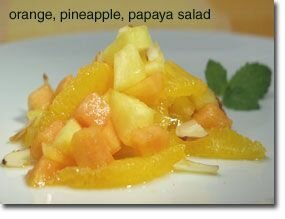


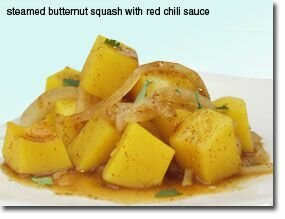
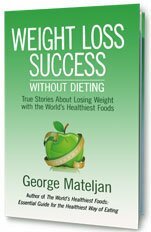 Find out how to keep your New Year's resolution and lose those extra pounds with our
Find out how to keep your New Year's resolution and lose those extra pounds with our 